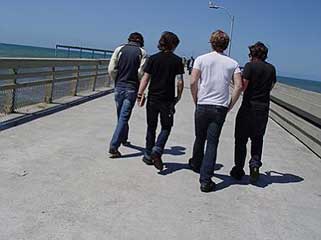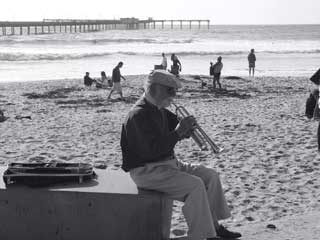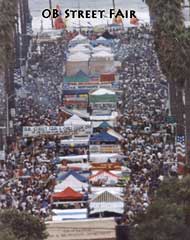
The Story behind the Story
The Music behind the Story
Reviews
Excerpts
NEW!
Teacher and Parent Resources
|
|
The Story behind the Story:
Under the Baseball Moon
From an interview first published in the Baker and Taylor’s Librarian's Newsletter, October 2006
Question: You write with a unique rhythm and style that are quite commendable. What would you attribute this to, i.e., writing classes, reading specific authors, listening to jazz while writing, etc?
John: It's funny, but no jazz, no rock when I work. Probably because I grew up on Kumeyaay land and I'm part Blackfoot, but I listen to Carlos Nakai's Native American flute music exclusively when I write. In The Boy Who Saved Baseball, I even had Cruz de la Cruz ride in "on the lonesome trill of an elderberry flute." Of course, as with any artist, my influences are huge and widespread. My literary heroes have always been Dylan, Twain, Steinbeck, and Kerouac, pretty much in that order. Today I would add Cormac McCarthy and most recently, Leif Enger.
In the case of Baseball Moon and the jazzy voice I use, it first came to me as I walked the streets of New Orleans in the spring of '03 and sketched out the original story. But it probably originated way back in my younger years. When I was 15, the same age as Andy and Glory, the Bob Dylan Songbook fell into my hands and changed my life forever. I found it to be an amazing book-full of crazy characters, of sadness and love, of desperation and revolution, of insight, and morality, and even humor.
I began carrying around a spiral notebook in my back pocket, cover torn, metal rings flattened from school desk seats, pages bent, half-ripped, but all filled with blue pen lines scribbled out, fast paced, double-spaced, full of civil rightist, war protest love songs. And that experience gave me my emotional material for Over the Wall and a prose rhythm I still dip into, as you can see. Under the Baseball Moon simply became the right vehicle—with the right characters—to tap into that songwriting background.
Question: Glory Martinez, she is a handful. It seems like she stepped out of a Joyce Carol Oates novel. Can you elaborate on why she had such a tough upbringing and still comes across with charm and drive? She is one of the more intriguing characters I've come across in recent YA literature.
John: Well, I don't know what Joyce would say, but I love Glory. It's amazing how many girls write and tell me the same thing. As for her charm, I see it as being hard-won through a conscious decision she made a few years before the book begins. As a small child, her wild costumes and the creation of her "woman on a flying horse" fantasy, which she tells Andy about, pulled her through scary situations, but the effect didn't last. So I see her development into a loving and charming teen as being part of that same survival mechanism, step two. I know from personal experience how hard it is to grow up happy and somewhat normal in a single parent home when that parent is an alcoholic. As you get older, though, you have a choice, and it can go one of two ways. Either you become your antagonistic, anti-social parent and repeat his mistakes or, by watching and suffering through his failures, you become the opposite. Of those two choices, Glory made the healthy one, which, as you say, is quite unusual in YA literature. But kids in Glory's situation do occasionally develop a desire to dream big coupled with the drive to succeed, and I find this rare character far more fun and interesting to write about than the typical.
Question: What characters in Under the Baseball Moon do you most identify with? And are there any in your other books?
John: Andy, the main character in Baseball Moon, is fairly autobiographical. I wrote tons of songs and dreamed of making it big in the rock world from age 15 to 22. His father, though, is closer to who I am today. His approach to life and his view of the entertainment industry's customary habit of reining in and "branding the maverick" of talented rising stars whom they deem as being too far out creatively is mine as well.
Question: What are you working on now for children or teens?
John: I'm writing a prequel to The Boy Who Saved Baseball, going back over a hundred years to the early days of Dillontown. We meet the crusty old ballplayers and characters only mentioned in The Boy, such as Blackjack Buck and Long John Dillon, as well as Cruz de la Cruz (in some form) and Billy the Kid. It's going to be a wild story, but with a twist, as I love to do. |

Andy and the gang

Andy's inspiration

Ocean Beach Street Fair |




